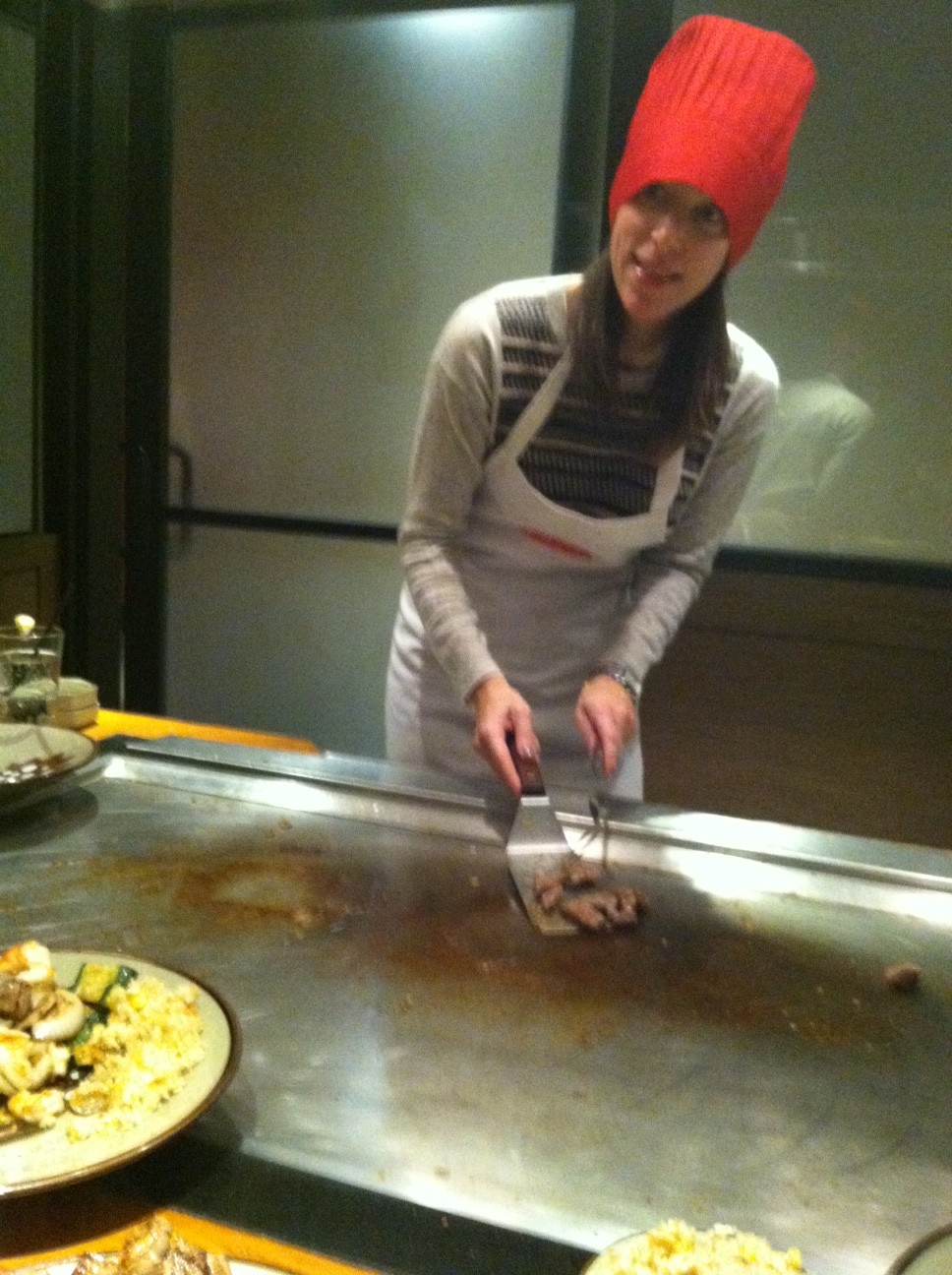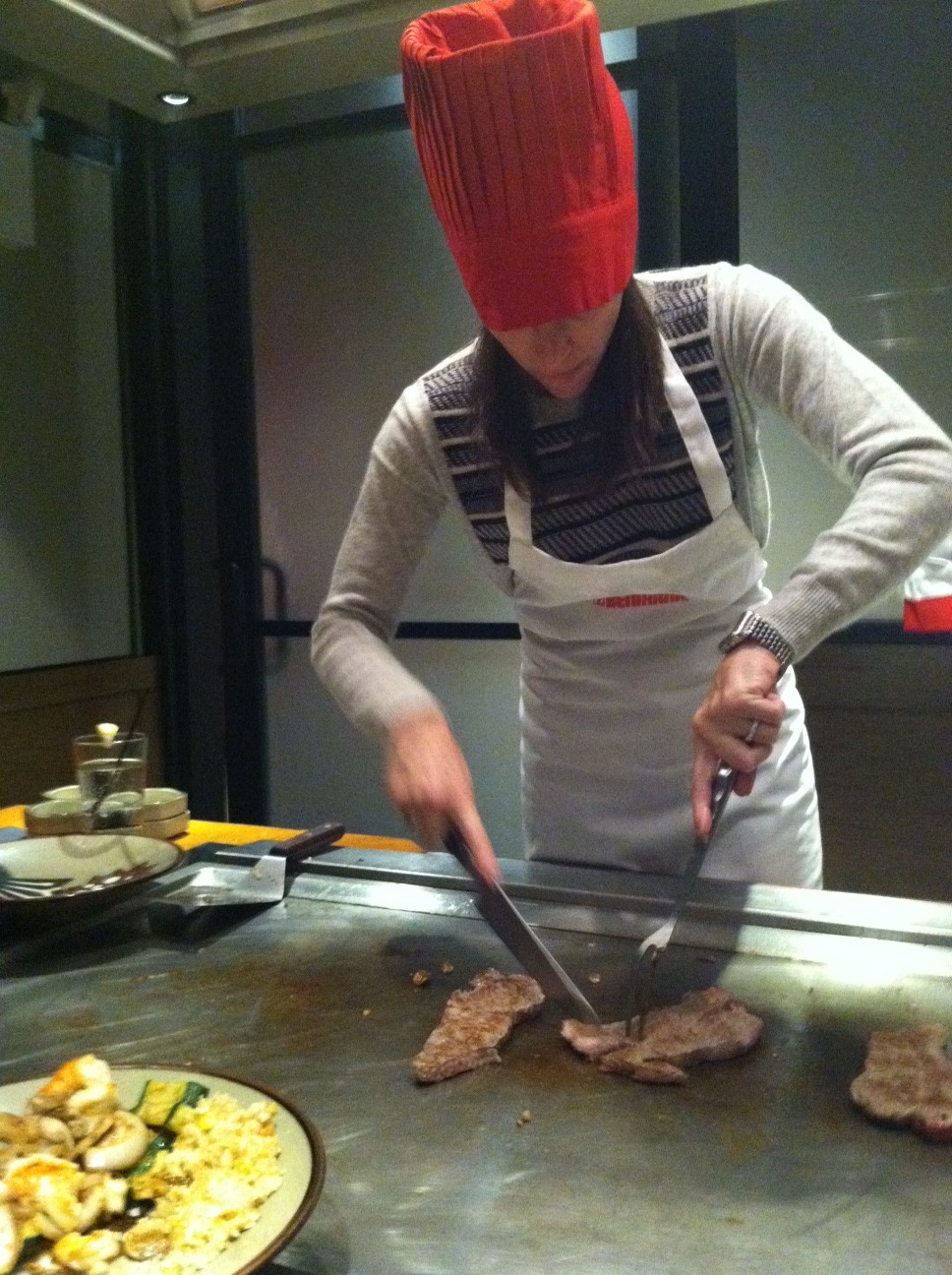It’s holiday time- a full month synonymous with festive parties and dining out. In fact, restaurateurs say that more families than ever are choosing table service over table setting.
For years, one of our favorite family dining experiences is eating habachi style at Benihana restaurant. Last month I had the honor of training one-on-one and Be-the-Chef with head chef Rupak at Benihana’s NYC midtown location. I learned the art of Teppanyaki cooking and all the celebrated tricks of the Benihana trade (including flipping shrimp tails into my hat and creating onion volcanoes). If you missed it, definitely check out my video, it’ll make you laugh out loud:
Now that I’ve been on the other side of the table, managing a large hibachi grill with a variety of foods requiring different temperatures is not an easy task. You have to stay focused and know exact cooking times for each item on the menu. While the chefs certainly entertain their customers by creating beating hearts from vegetable fried rice or rolling eggs offf of spatulas, the overall food presentation and taste are just as important to the overall Benihana experience.

 cutting the meat against the grain
cutting the meat against the grain
Before I even started cooking, Rupak taught me the ultimate grilling tips from Master Chef Sakai. Iron Chef Hiroyuki Sakai (one of the original Iron Chefs), has served as Benihana’s Executive Culinary Advisor since 2007. The habachi grill is a tricky surface with massive heat variances from 450 degrees in its center to 250 degrees around its perimeter. Chef Sakai’s grilling tips can translate to any cooking location, from a kitchen to a small outside grill:
- Lock in the juiciness of your chicken by searing the meat on high and resting it on medium-low heat until cooked through.
- To maximize and enhance the flavor of your meat, season it toward the end of the cooking process. If you add salt and other seasonings at the beginning of the meal, they will absorb the juices of the meat while you cook. Adding at the end of the process keeps the natural flavor inside and will make your meat more juicy and flavorful.
- Before cutting your chicken, allow the meat to rest, then make sure to cut with the grain at an angle. Allowing the meat to rest allows the tightened muscles of the meat time to relax and this will give a more tender texture.
Even though I live in an apartment that has a four burner stove, I now ollow these tips whenever I’m sauteéing chicken or meat and I have noticed a huge difference in their flavoring. Whereas in the past I’d have a tendency to overcook my meat, now my meat is tender and juicier, with markedly more flavor.
So, what are you waiting for? Print out these tips and keep them in your back pocket the next time you find yourself grilling meats. I promise you’ll notice a huge difference in your finished masterpiece.
And, to experience Benihana first-hand, click here to find locations near you.
Happy Holidays.







Speak Your Mind